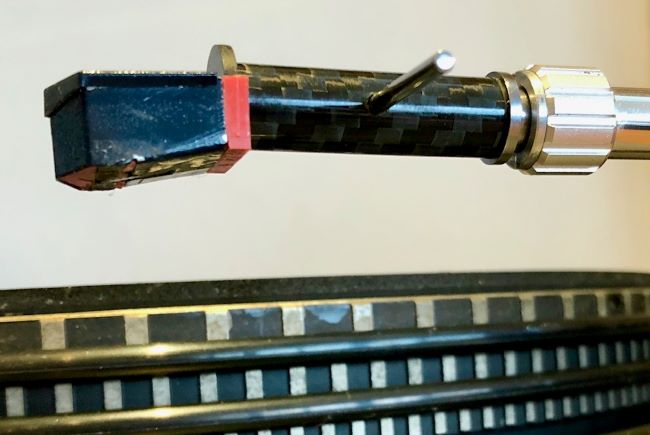
[ Home | Staff & Contacts | HiFi Playground | Listening tests | DIY & Tweakings | Music & Books]

Product: Cartridge mount adapter Decca London cartridges
Manufacturer: Stanley Engineering, ebay store
Price: see ebay shop but as usual YMMV due to different woods and currency fluctuations
Author: Mark Wheeler - TNT UK
Reviewed: Spring 2020
Published: October, 2020
“Hang on a moment!” interrupt Plebs chorus, stage left, before the Old Scribe's even started, “Everybody knows that the Decca London cartridge does not work on a J-shaped SME3000...”
Hot on the heals of heretical goings on with modified Michells and spokified Sondeks here at TNT-audio.com we consider other heresies. Despite the prevailing hegemonies of Audio Groupthink we're willing to go where few have gone before and challenge the dogmas handed down by our forebears.
Steve Haake, Sports Scientist (Haake 2020), mentioned that competitive ice skaters (are there any others?) and ice dancers wanted to know how carbon fibre could be added to their blades and skates to give them an advantage. Such is the mythology surrounding carbon fibre that every sport, from Formula 1 down has been seduced by the allure of this supposedly miracle material. Audiophiles first began using carbon fibre archery arrow shafts and fishing rods as pick-up arm tubes and Wilson Benesch (local to the TNT-audio mountaintop lair) applied carbon fibre very effectively to turntables and loudspeakers.
Carbon Fibre could well be the miracle audiophile material. Carbon Fibre (depending on the resin used to carry it) is extremely light; the Old Scribe Ducati has many parts replaced by carbon fibre and to hold a thermoplastic original mudguard in one hand and the carbon fibre replacement in the other really makes this point). Carbon fibre is inherently self damping and its strength and rigidity can be tailored by the carbon fibre lay. Thus your Old Scribe was excited by the opportunity to test a carbon fibre approach to tame the electromechanical audio transducer most prone to resonance.
One oft repeated audio narrative is that the fiercely divisive, and indeed often fiercely resonant, Decca London (aka London) cartridges in their various Blue, Maroon, Gold and Super Gold iterations, will only work in damped unipivot pickup arms. This story might have grown because Decca Special Products marketed their own Decca International pickup arm, which was indeed a fluid damped unipivot. A cache of NOS Decca International pickup arms were discovered a couple of decades ago and sold by Moth Marketing (at a bargain price through the auspices of the Hi-Fi News Accessories Club) and these were thus the first exposure to a new a generation of audiophiles to this venerable arm. Decca Special Products division was terminated as an inevitable sequelae of Decca's takeover by a vast global conglomerate and now more modern examples of the damped unipivot genre are pressed into service for those wanting the unique pleasure and pain of a Decca London cartridge.
Another, oft repeated, audio story, usually without first hand evidence, is that the Decca London variations do not work at all in the 1960s contemporary “best pickup arm in the world”, the SME 3012 and SME 3009. Your Old Scribe has often wondered whether this would still be true if those arms were fitted with the later, optional SME FD200 damper dashpot. The two point vertical bearing system of the Origin Live pick-up arms are supposed to offer the best of both arrangements of unipivot and gimbal vertical pick-up arm pivots. The knife edge bearing of the SME Series I, Series II and Series III pick-up arms might be imagined to behave very similarly to a two-point vertical pivot. Therefore, your Old Scribe mused, laying down his trusty quill and parchment, fitting an FD 200 to an SME 3012 might be the answer to a Decca London owner's vintage cravings.
A former Decca employee, John Wright took over servicing and manufacture of these cult cartridges in the picturesque Shropshire town of Bridgnorth on the banks of the River Severn. Since the demise of Decca Special Products, John developed the London Reference and London Jubilee to address the main shortcomings of the original Decca Blue, Maroon and Gold cartridges. These new models' owners enjoy improved structural rigidity and assembly durability. John Wright continues to service and repair older models, which is where the two strands of this story meet.
Before undertaking this review the Cartridge Man rebuilt Decca needed some tender loving care, a coil having come adrift inside due the slings and arrows of outrageous cartridge swapping, despite its very low mileage since the previous rebuild. John Wright provided a very reasonably priced service and an exceedingly quick turnaround, enabling the cartridge to be ready for the review as fast as the mail could bring the parts here reviewed.
Given the oft reported benefits of carrying Decca cartridges in damped unipivot arms, this rebuilt and retipped Decca Blue has mostly been used bolted up to a spare arm-tube on the Van den Hul continuous silver rewired Hadcock GH242 SE Silver pickup arm. This arm is a perfect match for the Decca cartridge.
“So why is the Old Scribe moving the Decca cartridge to an old SME 3012 II?” Demand Plebs, stage left
The Hadcock GH242SE silver damped unipivot will be an excellent reference for this experimnent. The Decca was tried first, for this test, on the Garrard 401 with a series I SME 3012 as an example of what was possible back in the day. The Series 1 SME uses a heavier stainless steel thin wall J shaped arm tube than the Series II. It will be tried on the Series II with equalised mass (the Series II aluminium wand is much lower mass) and with the native mass combination uncorrected.
In the SME handling noise and colouration are of a similar character to the Decca handling noise in every other pick-up arm. However, in the Series I SME it was much greater magnitude than with the Hadcock GH242 SE Silver or the Michell Tecnoarm. However, there were also some aspects about the combination that hinted at correctness and deserved to be explored further.
The series I SME 3012 was then swapped out for the SME 3012 II because this would allow use of a SME FD200 damping trough, given the reported Decca suitability for a damped arm. One hypothesis supporting the use of a 3000 series SME is that the knife edge vertical bearing may share some dynamics of a unipivot, or at least a duopivot. It may be that it is the unipivot damping people prefer, as much as the pivot type. Hence the experiments.
Before the SME FD200 damping trough is installed, the Series II SME 3012 is auditioned to establish if there is any difference from the series I. Undamped, without correcting for the lower moving mass of the Series II there is a stark audible difference. The heavier, stainless steel tubed Series I suits the modified Decca Blue much better. Equalising arm mass made only a slight difference to the sound, although it profoundly affected the fundamental resonnce.
The introduction of pick-up arm damping, in the form of the SME FD200 damper assembly immediately brings a different advantage to the Series II SME 3012. Unfortunately the Series I SME cannot support the FD200 damper due to the shape of the early lift-lower device. The Series II R model (a later Series II version with a thin walled stainless steel tube) was not available to test.
The resonant thin metal can of the Decca and the flimsy plastic 1/2" mount remain its pair of Achilles' heels. These have been thoroughly addressed in the newer John Wright models. Enter Stanislav Guk of Stanley Engineering who addresses both these issues on the older models. The Stanley Engineering cartridge bodies (review soon) reinforce the Decca body in a different manner from some previous attempts to circumvent the flimsy plastic bracket. There have been previous efforts at more stable Decca mounting, notably by the Australian Garrot Brothers and the Deccapod. Stanislav ploughs his own furrow choosing woods (timber) whose mechanical properties have been successfully used with many high-end cartridges. The sensitive Decca London will be particularly affected by a wooden body, which we will explore next time. The other issue is the mechanical integrity of the whole system of cartridge, headshell and arm. For classic SME owners, Stanley Engineering have developed a solution that removes two of this trio entirely.
“What trio? Eh?” Enquire Plebs, stage left, failing to concentrate
Stanley Engineering offer carbon fibre adapters to replace the whole SME headshell and the flimsy L-shaped plastic Decca cartridge mount. Carbon fibre has a history in pickup arm construction, from DIY arrow shaft pickup arm tubes to one of the better early competitors against the ultra-lightweight SME 3009 II improved, the ADC LMF1.
These adapters offer a promise of reduced complexity, reduced interfaces and reduced opportunity for resonance. To establish whether these were the audible variables, each combination of parts was weighed before installation. This is because changed moving mass of the arm cartridge combination will affect the sound of the combination, especially in the bass. Additional mass was used at the headshell (using fisherman's tungsten putty) to compare like-for-like before reverting to the native moving mass of the combination as it will be used by purchasers. Mass was therefore equalised in each instance between the original headshell cartridge combination and the Stanley Engineering Carbon Fibre SME adapter.
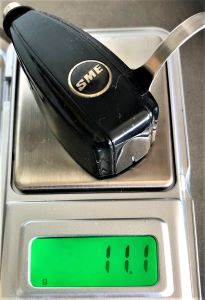
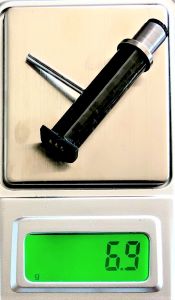
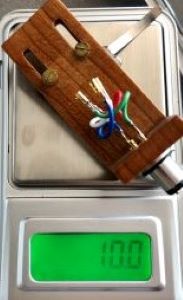
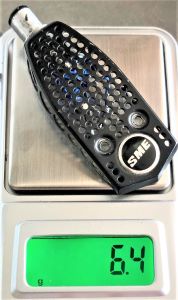
“No headshell? On a traditional SME? Even the non-detachable arms have a headshell!” Enquire Plebs, stage left, perfectly reasonably
Becoming the equivalent of the Technics fit Ortofon Concorde, the Stanley Engineering mounted Decca cartridge now has a lower centre of gravity than when headshell mounted and fewer parts (no headshell, no bolts, no nuts) to resonate or undermine mechanical integrity. The removal of the soft plastic L-shaped bracket probably makes the most impact in retrieving precious data from those microgrooves.
Installation is straightforward and initial tests were undertaken with the original Decca mumetal lid and 2.5g soft tungsten fishing weight mounted to the arm underside next to the headshell mount. This extra weight was added to ensure exactly equal moving mass between four conditions:
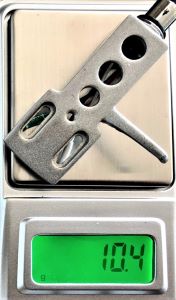
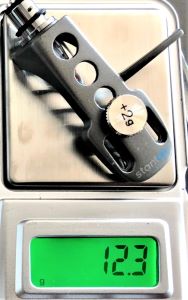
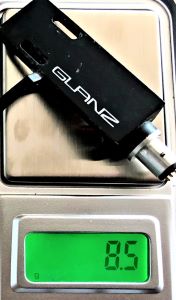
Immediately noticeable is both a reduction in handling noise and a change in the character of the handling noise.
The Stanley Engineering Carbon Fibre adapter is a great improvement in every respect over the original Decca floppy plastic “½ inch” mount in the feeble SME perforated headshell. The Stanley adapter is also much better than a stronger magnesium headshell on the SME3012 arms. The Stanley Carbon Fibre adapter is also much clearer sounding than the cherry wood headshell, which with hindsight may have been masking one set of problems with another.
Some frequency sweeps were tried, both in silence and while the turntable is bombarded with the output at about 100dB. The resonances, in both situations, are reduced considerably, in both number and magnitude. It is possible to generate runaway feedback at higher levels with the original standard Decca London mount in the SME headshell. These resonances are much reduced with the Stanley carbon fibre adapter and feedback less excitable.
Using the Dynavector XX2 mkii on the Pedersen Orbe/GH242SE as the bridge reference and the judging system to preserve some aural memory between raw and modified conditions, it was possible to dig deep into the complex nature of the differences. Initially, despite a replaced coil and service, the Decca was set up with the same tracking force and bias as previously, without damping. This was just to check all was working as it should before taking time to optimise it. Despite this impatience, the improvements enabled by the Stanley Carbon adapter are obvious, but possibly exaggerated by the lack of damping.
Comparing the SME 3012 Series I with the SME 3012 Series II, the Series 1 higher mass stainless steel arm tube is audibly a better match for the Decca London cartridge, and possibly the wider knife edge bearing of the Series 1 SME might help too.
The SME 3012 Series II has a different lift-lower device that permits the fitting of the SME FD200 damping trough. The Decca London cartridges benefit from copious amounts of damping, being entirely undamped internally. In this respect, as well as in generator design, they are the antithesis of the Dynavector XX2 mk2 being used as the reference between Decca iterations.
At this point in the process reviewing became difficult, because the desire to hear tunes on the Garrard 401, SME 3012 ii and Stanley adapted Decca Blue/Maroon overtook the impetus to take notes. As the stylus reached Hanging Around by The Stranglers on an original copy of Rattus Norvegicus (bought in Beatties department store with the "free" copy of Peasant in the Big Shitty and only ever played with good styli) the bass resolution, enabled by the adapter, was in a much higher league.
The Garrard/Decca ability with bass and pace is ace. This driving quality, without overwhelming or upsetting (yes the Upsetters get a spin later) the higher frequencies was a primary motivator to try the Pedersen modifications on the Michell Orbe. The Stanley Carbon SME Adapter edges the Decca ahead of the Dynavector on bass and pace, (aided and abetted by the Garrard 401), while closing the gap just a little in the midrange.
As The Stranglers continued through Peaches and Grip on side 2, these qualities and Decca shortcomings emerged with rapidly increasing clarity. This is before tracking force and bias optimisation with a test disc and before installation of the SME FD200 damper accessory. Just time for a quick spin of Peter Tosh Legalize It before the serious business of damper installation and optimum set up. The energetic driving bass of both Family Man Barratt & Robbie Shakespeare prevent any other activity than listening, delaying the next step. Better control of bass enables noticing the accurate male vocal timbre and percussive transients, with the Decca held in the driving seat by the Stanley adapter, this is a punky reggae party until full set up is achieved.
Installation of the SME FD200 damper accessory, was followed by proper set up, including renewed lateral balance. Lateral balance is frequently neglected on SME 3000 arms but is crucial especially with energetic low compliance cartridges, like the Decca or old skool moving coils. Lateral balance proved difficult due to the lightness of the carbon fibre adapter and denuded cartridge. Using a smaller rider weight from a later 3009 solves the problem Once up and running again, the aggressive wildness of the resonance driven typical old body style Decca is mitigated by the extra rigidity of the Stanley Carbon adapter improving the integrity of the mechanical connection to the arm tube. This improved mechanical integrity increases the effectiveness of the damper over a wider range of frequencies.
The Series 1 SME 3012 clearly suited the Decca London better than the Series 2, even when mass is equalised with the higher mass stainless steel arm tube. The beneficial effect of the SME FD200 rendered the Series 2 with FD200 the preferable combination though. In theory, therefore, the Series 1 SME3012 would sound best of all with the FD200 damping trough, but the damping trough cannot be fitted to the older model, so we will never know. Perhaps one of the late model SME 3012 S2 R with thin wall stainless tube and with a FD200 damping trough would be best of all.
Decca cartridges have always had unusually flat frequency responses for cartridges which began at the same price as a Shure M75 back in the day. The best result tends to be into a 33kΩ load. The closest achievable with the Gold Note PH-10 in use during this review, is 22kΩ, which seemed to come alive in a way that will annoy readers of a more objectivist inclination.
In ancient HiFi Choice reviews, the two Deccas tested were also best at reproducing square waves. Indeed these square waves were remarkably accurate compared with most transducers of the time. It is this inbuilt potential that prompts Decca devotees to go to such extraordinary lengths to try to maintain this accuracy despite the flimsy resonant bodywork.Prior to trying the Stanley Engineering Carbon Fibre SME adapter, the Decca London cartridge in this review has been tried in a selection of magnesium, aluminium and exotic wood headshells. A cherry wood headshell had previously offered the most pleasing 'sound' but this may be colouration masking other problems. An optimised Stanton variable mass DJ headshell has proved to offer the strongest competition to the Stanley Carbon Fibre adapter, but the Stanley product is the clearest sounding by a substantial margin. The key to the success of the Stanley product is the elimination of the flimsy Decca plastic 1/2inch adapter.
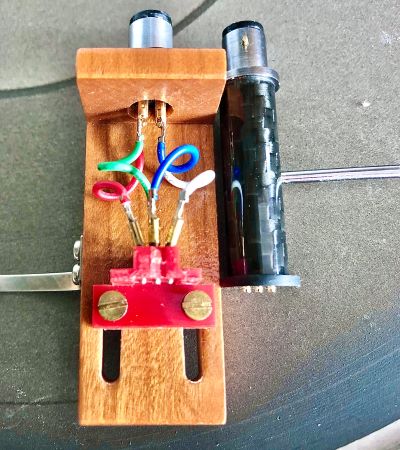
Fitting a Decca London cartridge to J type and S type conventional pick-up arms is now a better prospect with the Stanley Engineering Carbon Fibre SME adapter. Numerous OEM arms use similar detachable headshell fittings, so the application is not limited to SME 3000 series pick-up arms; Pioneer, Audio Technica, Technics, and their imitators have all included pick-up arms in their ranges which would benefit from this adapter if trying an old type Decca cartridge. Results will also be affected by whether some kind of damping is possible. The dramatically different vertical and horizontal compliance of the Decca may determine whether an arm can be matched with these idiosyncratic cartridges. The Stanley Carbon Fibre adapter mitigates the mechanical challenges of any such installation.
Your Old Scribe obtained a Series II SME 3012 (aluminium tube) expressly for the purpose of trying the SME FD200 damper (obtained NOS) with the Decca cartridge. Results with the Stanley Engineering Carbon Fibre SME adapter are so encouraging that it may be worth pursuing experiments with the stainless steel thin wall tubed SME 3012 R with the Stanley Engineering Carbon Fibre SME adapter and SME FD200 damping trough.
The Stanley Engineering Carbon Fibre SME adapter has the potential to be a game changer in the narrative of whether a classic 1960s - 1970s Decca London cartridge can be used with a contemporary 1960s SME 3012 pick-up arm.
|
Music enjoyed while writing this review |
Reference system |
|---|---|
|
on vinyl of course
Test Discs
|
Equipment used in this review:
Extensive and ever evolving acoustic treatment including corner bass absorption, high frequency (above 2kHz) absorption at primary tweeter reflection points, high frequency diffusers at other critical points, sloping ceiling with absorber >2kHz. Solid walls and argon filled triple glazing and no radiators. Hanging rugs and thick textured floor rug between listeners and loudspeakers, solid slate floor. Some wire is used to join these components together. No interconnects cost more than 10% of the device at each end, much of it made by the Old Scribe from high quality components without Pixie Dust. Old Scribe amplifier-to-loudspeaker wire (full range, mid-range, tweeter) is ultra-low impedance Black Rhodium S900, a low-Z variation (3x3mm^2 csa) on the Black Rhodium S300 & S600 cable that came out well in Ben Duncan's objective and subjective correlation tests, selected primarily to match the OPT/driver damping factor, not for any magical qualities. Bass only loudspeaker cable Naim NACA 5, which remains rarely challenged below 300Hz. Mains is supplied by an audio only ring main with Radex earth (ground) non-inductive connections and a technical earth. Crossover and power amplifiers fed by a minimum connections hydra. Sources and pre-amp from terminal blocks within the audio only ring. |
“Why Stan and Ollie in the title? Ask observent and patient Plebs, stage left
Well, "Stan" is short for Stanislav, the maker of these fine wood bodies and an "Ollie" is a skateboard move involving the board losing contact with the ground. The Decca London is notorious for leaping from the groove if not correctly supported. "Stan & Ollie" was the nickname of that equally slapstick movie comedy duo. It seemed like a good pun at the time. It probably loses something in explanation.
DISCLAIMER. TNT-Audio is a 100% independent magazine that neither accepts advertising from companies nor requires readers to register or pay for subscriptions. After publication of reviews, the authors do not retain samples other than on long-term loan for further evaluation or comparison with later-received gear. Hence, all contents are written free of any “editorial” or “advertising” influence, and all reviews in this publication, positive or negative, reflect the independent opinions of their respective authors. TNT-Audio will publish all manufacturer responses, subject to the reviewer's right to reply in turn.
Copyright © 2020 Mark Wheeler - mark@tnt-audio.com - www.tnt-audio.com
[ Home | Staff & Contacts | HiFi Playground | Listening tests | DIY & Tweakings | Music & Books ]